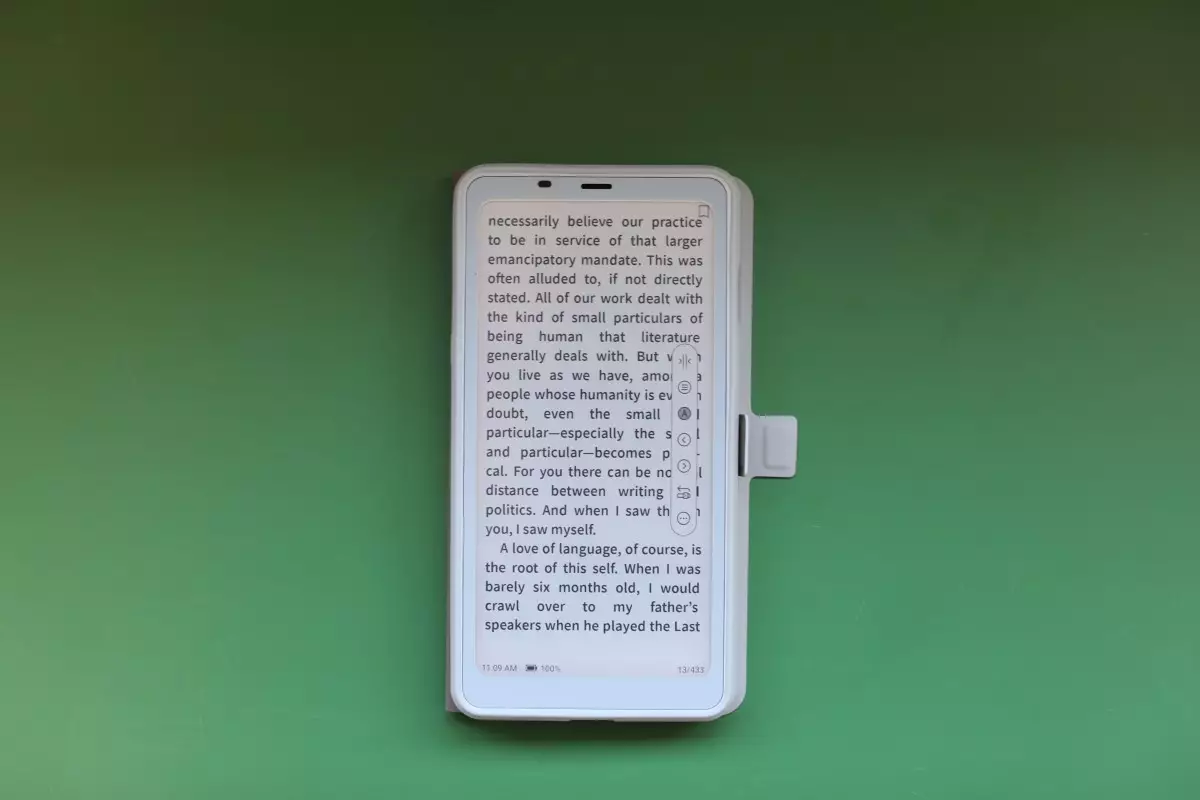In a digital world awash with distractions, the Palma emerges as a curious blend of innovation and uncertainty. Marketed as a “distraction-free device,” this e-reader aims to help users reclaim their attention amidst the incessant barrage of notifications and social media updates. However, the Palma raises important questions about what a distraction-free experience truly entails, as well as the delicate balance between being a specialized gadget and a jack-of-all-trades device.
The Struggle Between Digital Minimalism and Functionality
At first glance, the Palma might appear to aspire to the same philosophy as the Light Phone—a device intentionally stripped of features to help users disengage from the overwhelming connectivity of smartphones. But the Palma takes a different approach, presenting itself as a multifaceted electronic device that offers e-reading capabilities, alongside a range of features that seem to contradict its primary purpose. Herein lies the paradox: while the Palma claims to provide a focused reading experience, its added functionalities could dilute its core mission.
One particularly notable aspect of this contradiction lies in the subjectivity surrounding what constitutes a “distraction.” For some, notifications and social media are key distractions that drain focus; for others, essential tools like communication apps are invaluable. The Palma’s incorporation of features such as a camera, microphone, and access to the Play Store raises the question of whether the device genuinely serves its purpose of facilitating a distraction-free environment.
Despite its ambitious design, the Palma does have inherent limitations that can hinder its utility. The device runs on an older version of Android and has a peculiar assortment of features that make it feel like it is caught in a technological identity crisis. However, these very limitations can spark fascinating discussions among users on forums, where people brainstorm ways to augment the device’s potential.
For instance, while the Palma includes a microSD slot for additional storage, it lacks the capability for SIM cards, limiting its communication functionalities. This prompts users to seek workarounds, such as employing messaging services or using Bluetooth. While such innovations are commendable, they also reflect a reliance on a secondary device to achieve functionalities that the Palma ostensibly promises to offer.
As someone who often seeks a reliable e-reading device, I find solace in the fact that the Palma does excel in this area. The product boasts an ePaper display that reduces eye strain and offers extended battery life compared to traditional smartphones. With a 300 ppi resolution and a well-designed front light, reading on the Palma can be a pleasant experience, particularly in low-light environments.
However, it’s critical to note that ePaper technology comes with its own set of refresh limitations, which can impact the reading experience, especially for those who are accustomed to the fluid displays of contemporary tablets. Although the Palma has made strides in smooth performance thanks to its upgraded processor, there’s still room for improvement.
With a retail price of $280, the Palma occupies a complicated space in the market. While the hardware is admirable and represents a viable e-reading option, the price tag becomes hard to justify unless users are keen on maximizing all its features. For consumers primarily seeking a compact, high-quality e-reader, they might find more straight-forward alternatives at a lower cost without the distractions that come embedded in the Palma.
This disconnect between capabilities and pricing could impede wider adoption, particularly given that Boox has already established a reputation for excellent e-readers. A streamlined version of the Palma, focusing solely on E-reading with a more competitive price point, might resonate better with potential consumers—offering the balance between functionality and simplicity that a true e-reader should embody.
The Palma stands as a fascinating exploration of the e-reader space, tackling the tension between the need for focus in an overstimulated world and the demands of modern technology. It has noteworthy features and offers a competent reading experience. However, its identity crisis—caught somewhere between being a specialized e-reader and a multifunctional tech device—raises essential questions about purpose, functionality, and user experience. Ultimately, for the Palma to realize its full potential, it may need to embrace simplicity while delivering on its promise of helping individuals reclaim their focus.

